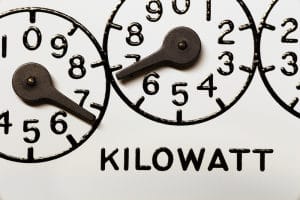 Pretty much everyone would like to lower their energy bills, right? Some of us even want to lessen our impact on the environment. But unfortunately, it seems like a large task for many of our older homes, especially if you haven’t done it before. Luckily, improving the energy efficiency of your home doesn’t have to be complicated or too expensive. Let’s look at some of the starting ways that you can improve the efficiency of energy in your home. Insulation
Pretty much everyone would like to lower their energy bills, right? Some of us even want to lessen our impact on the environment. But unfortunately, it seems like a large task for many of our older homes, especially if you haven’t done it before. Luckily, improving the energy efficiency of your home doesn’t have to be complicated or too expensive. Let’s look at some of the starting ways that you can improve the efficiency of energy in your home. Insulation Check in your attic as well as your walls, because that will keep the heat in (or out), or the cool air in (or cold air out), depending on the season and your location. No matter the weather in your home, insulating it well is a good thing. Some homes have walls without any insulation, or attics that are unfinished and therefore not insulated as thoroughly as they could be. Fill in the holes in your walls with insulation, and make the insulation in your attic as good as it can be. While choosing the insulation is, of course, important, the person installing it is even more important. They will determine how successful your insulation ends up being, so be sure to hire someone who really knows what they are doing, as the long-term savings will be well worth the higher upfront costs.
WindowsThe next most important aspect of your home to worry about is the windows. How long have your windows been around? Are they drafty and ancient, or new and updated? The key thing to remember with windows is that it isn’t financially worth replacing them completely with energy-efficient ones unless they needed to be replaced anyway. If your windows aren’t energy efficient but are still functional enough that you wouldn’t want to replace them, simply utilize weatherstripping or storm windows to improve their efficiency. Shade
One big aspect that many homeowners don’t think about is adding shade around the property of their home. This is really useful when you live in an older home, or if the insulation in your home is not especially effective. If you have strategic landscaping that shades the outside of your home, however, you will find yourself saving energy just by trees and shrubs blocking much of the direct sunlight that would normally hit and heat up your home.
Get a new furnace What kind of furnace is in your home? Was it built before the early 1990s? Does it have a standing pilot? If you answered yes to these questions, then your furnace might be wasting more than a third of the energy (or the amount of fuel it is taking in). It might be worth the extra expense to replace your entire furnace because the savings in energy and efficiency will be massive. Other, old types of furnaces also may be replacing, so be sure to check into it to see if you should get a more efficient one that will save you money in the long run.Subscribe to Energy Home Pros's Blog

Comments